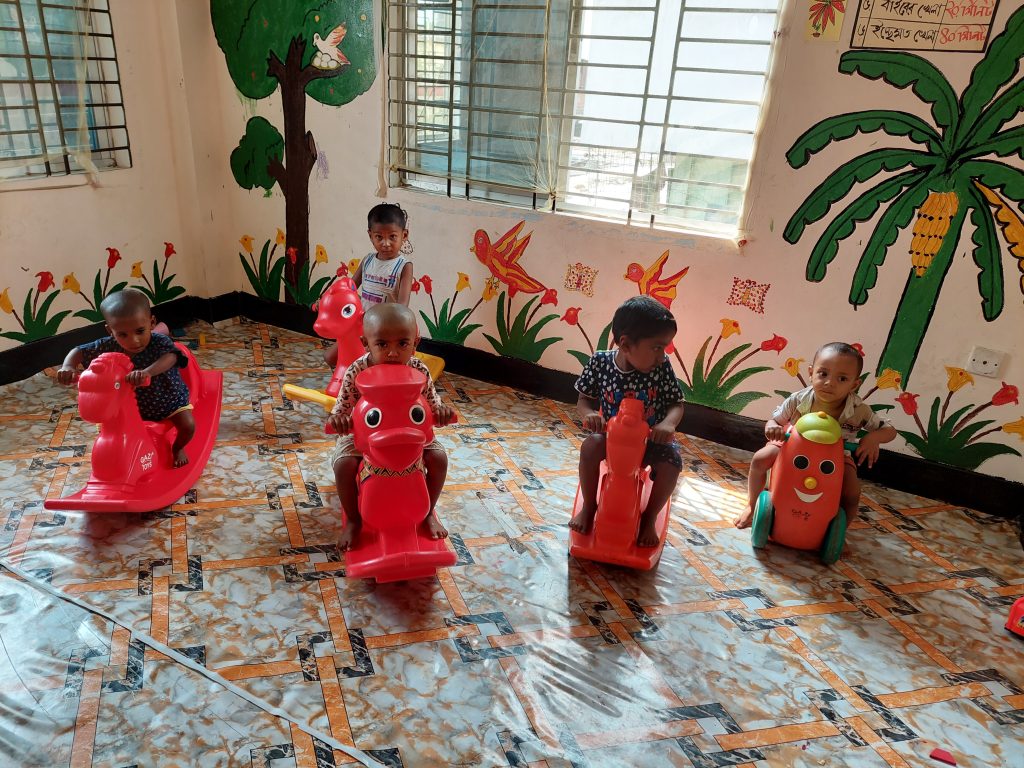Language and communication skills form the foundation for a child’s success in learning, relationships, and self-expression. While structured learning has its place, one of the most powerful ways children develop language is through play.

Table of Content
- The Connection Between Play and Language
- Social Play Builds Communication Confidence
- Constructive Play and Vocabulary Expansion
- Games with Rules Teach Language of Structure and Sequence
- How Parents and Caregivers Can Support Language Through Play
- The Long-Term Benefits of Play
- Final Thoughts
There is a general notion that play makes the leisure period rather than learning. But play is not breach of learning, it is part of learning or learning itself. Through play, children naturally explore sounds, vocabulary, storytelling, and conversation. In this article, we’ll explore how different types of play contribute to linguage and communication skills in children, and how parents and caregivers can support this growth.
The Connection Between Play and Language and Communication
From babbling with a stuffed animal to inventing elaborate stories with action figures, play provides countless opportunities for children to practice and expand their language skills. Play is somehow creative modality for learning rather rote learning or memorization. Through play children engage in learning with their true emotions and self-motivation. This makes it the perfect setting for organic language and communication development.
Language and communication grows best when it’s used in meaningful ways. When a child is motivated to communicate whether to explain a game, ask for a turn, or tell a story they are more likely to take risks, experiment with words, and learn new vocabulary.
Pretend Play: A Language and Communicatin Rich Environment
Pretend play (also called dramatic or imaginative play) is especially powerful for developing linguistic and communication skills. When children engage in pretend play, they often take on roles (like doctor, teacher, or superhero) and create dialogues to go along with their scenarios. Being engaged with pretend play and taking a role, children involve in dialogue with their play mates and that make the chance to exercise:
- New vocabulary (e.g., “stethoscope,” “temperature,” “ingredients”)
- Complex sentence structures (“First we bake the cake, then we eat it.”)
- Conversational skills (taking turns, asking questions, making requests)
- Narrative development (creating and following a storyline)
For example, during a tea party, a child might say, “Would you like some sugar in your tea?” practicing polite language and forming a full question. In playing out a hospital scene, they might say, “I need to check your heartbeat,” using themed vocabulary and role-based dialogue.
Social Play Builds Language Communication Confidence
Social play playing with others helps children understand the give-and-take nature of communication. As children negotiate rules, share ideas, and resolve conflicts, they develop:
- Listening skills: Understanding others’ ideas or needs
- Expressive language: It is the phase where children can reveal their thoughts to others through their own language.
- Negotiation and persuasion: Convincing peers or finding compromises
- Empathy: Understanding others’ emotions, which supports more thoughtful communication
Even simple games like “house,” “store,” or “superheroes” require children to constantly interact, adapt, and communicate their intentions and reactions.
Constructive Play and Vocabulary Expansion for Language and Communication
Engaging with constructive play, children can innovate something with different play materials like blocks, papers and other art supplies and Legos etc. This type of play often involves planning and describing actions, which encourages the use of sequencing words (“first,” “next,” “then”) and spatial language (“on top of,” “under,” “beside”). When children play in pairs or groups, they must describe what they’re doing and explain their ideas, enhancing both their vocabulary and clarity in communication.
Games with Rules Teach Language and Communication of Structure and Sequence
Board games, card games, and simple sports are also powerful language tools. These games introduce children to:
- Instructional language: Understanding and following directions
- Turn-taking language: “It’s your turn,” “Now I go,” etc.
- Strategy discussion: “If I move here, I’ll win!”
- Sequencing and cause-effect: “If I roll a six, I can move ahead.”
Explaining the rules, asking questions, and celebrating wins or handling losses all require thoughtful communication and social language use.
How Parents and Caregivers Can Support Language and Communication Through Play
Here are some simple, effective ways to encourage linguistic development during play:
- Talk with your child as they play: Narrate what they’re doing, ask questions, and introduce new words naturally.
- Join in their play: Parent can participate in pretend play and take a role and also join in dialogue with children.
- Read and then act out stories: Books inspire vocabulary and can serve as a springboard for imaginative reenactment.
- Encourage peer play: Arrange playdates to give your child opportunities to interact with other children.
- Provide open-ended toys: Toys that require imagination (e.g., puppets, dress-up clothes, building blocks) spark more talking and storytelling.
The Long-Term Benefits of Play
When children have regular opportunities to build language through play, the benefits extend far beyond childhood. These early communication skills contribute to better performance in reading and writing, stronger social relationships, and increased confidence in expressing ideas. Language-rich play also supports emotional intelligence, critical thinking, and the ability to collaborate with others. If you need more information Click here.
Final Thoughts on Language and Communication Skills
Language is not learned in isolation it grows in context, in conversations, and through experience. Play gives children all of these in an engaging, stress-free way. Whether they’re pretending to run a grocery store, building a spaceship from blocks, or playing tag in the backyard, children are learning to express themselves, listen to others, and connect with the world around them. As parents and caregivers, creating space for play is one of the most powerful ways we can support a child’s language and communication journey. If you want to know more Click here.